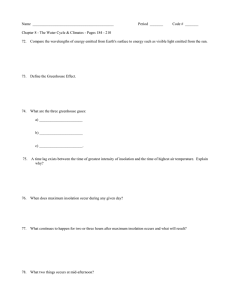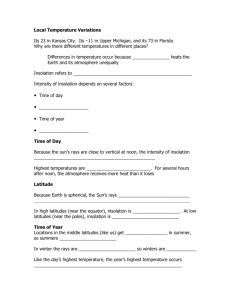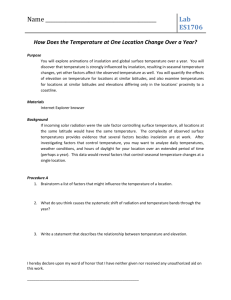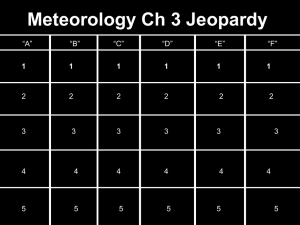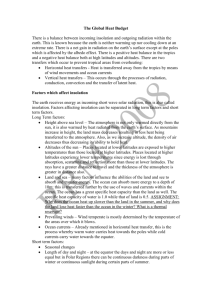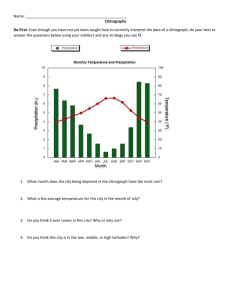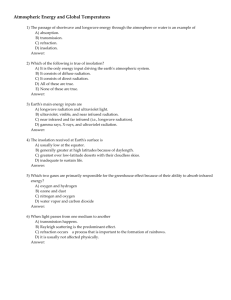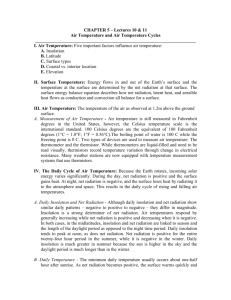Global Temperatures
advertisement
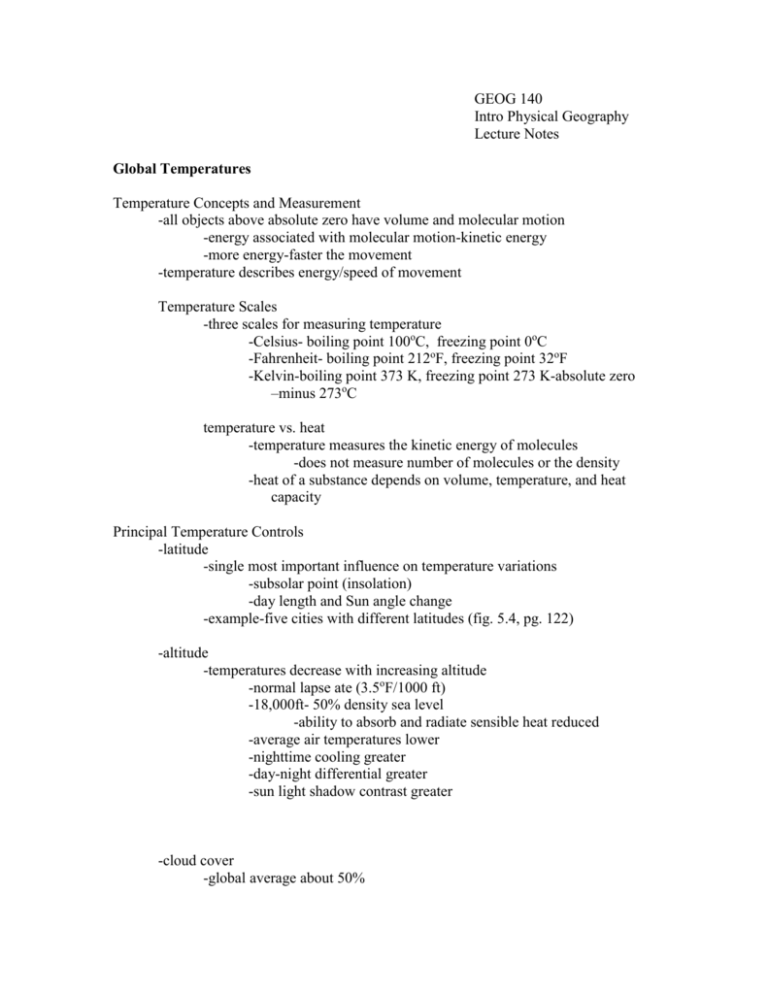
GEOG 140 Intro Physical Geography Lecture Notes Global Temperatures Temperature Concepts and Measurement -all objects above absolute zero have volume and molecular motion -energy associated with molecular motion-kinetic energy -more energy-faster the movement -temperature describes energy/speed of movement Temperature Scales -three scales for measuring temperature -Celsius- boiling point 100oC, freezing point 0oC -Fahrenheit- boiling point 212oF, freezing point 32oF -Kelvin-boiling point 373 K, freezing point 273 K-absolute zero –minus 273oC temperature vs. heat -temperature measures the kinetic energy of molecules -does not measure number of molecules or the density -heat of a substance depends on volume, temperature, and heat capacity Principal Temperature Controls -latitude -single most important influence on temperature variations -subsolar point (insolation) -day length and Sun angle change -example-five cities with different latitudes (fig. 5.4, pg. 122) -altitude -temperatures decrease with increasing altitude -normal lapse ate (3.5oF/1000 ft) -18,000ft- 50% density sea level -ability to absorb and radiate sensible heat reduced -average air temperatures lower -nighttime cooling greater -day-night differential greater -sun light shadow contrast greater -cloud cover -global average about 50% -effects vary with type, height, and density -reduce insolation that reaches the ground -night-act as insulation and radiate longwave energy -day-reflect insolation -most variable component of Earth’s radiation budget -land-water heating differences (five controls) -evaporation -84% of global evaporation from oceans -latent heat of evaporation -removes energy and lowers temperatures -more over oceans -transparency -water allows penetration of light to an average of 200ft -large energy reservoir -land is opaque -energy is absorbed in a much thinner layer -rapid heating/rapid heat loss -specific heat -heat capacity of an object -water requires more energy to raise temperature than land -movement -mixing in water (vertical and horizontal) -ocean currents and sea surface temperatures -higher ocean temp. result in higher evaporation to overlying air resulting in lower ocean temp. -negative feedback mechanism -summary of marine effects and continental effects (Fig. 5.7 pg.127) -maritime effect -moderating influences near coasts/islands -continental effect -greater min/max difference daily and annually Earth’s Temperature Pattern -tropical zone on each side of the equator experiences the least change between January and July -higher amounts of net radiation at lower latitudes -middle and upper latitudes (winter) -isotherms tightly packed -pronounced temperature gradient -contrast between land and ocean temperatures
